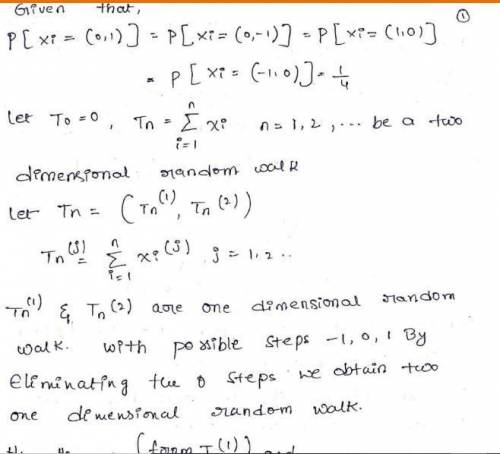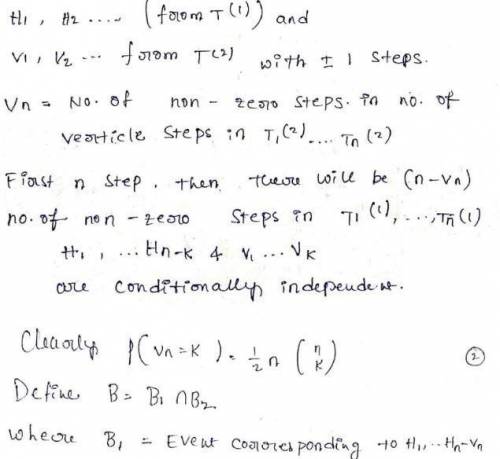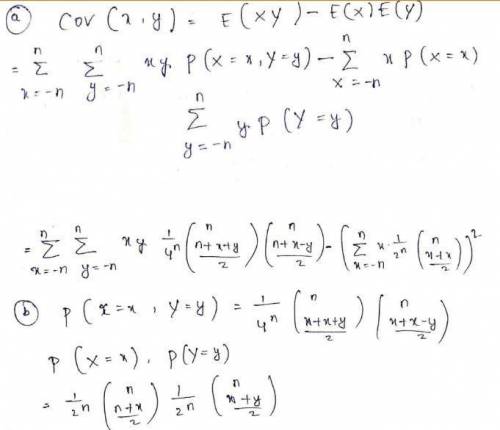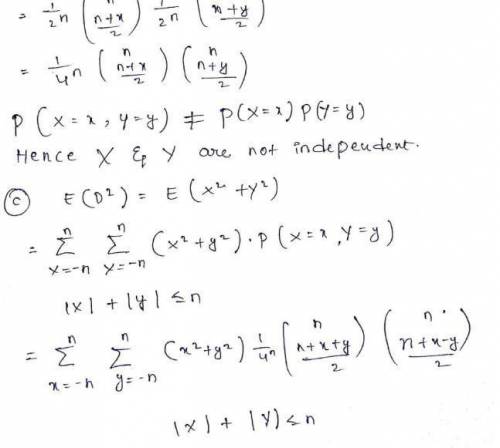
Mathematics, 21.04.2020 16:55 saadizak7098
A mouse walks in a maze that is an orthogonal grid made of corridors that intersect at crossings one foot apart, stopping at every intersection. Using coordinates (with units in feet), it starts at the origin, then moves equally likely up to (0, 1) or down to (0, −1) or right to (1, 0) or left to (−1, 0) by one unit until the next crossing. Then it stops, picks another random direction (up, down, right or left) equally likely and moves by another unit till the next crossing. Every time it stops, its position is a vector (a, b) where both a and b are integers. Scientists let the mouse walk n feet, after which its position is (X, Y ) and it is at distance D from the origin (D = √ X2 + Y 2).
a) What is Cov(X, Y)?
b) Are X and Y independent?
c) What is E(DP)?

Answers: 1


Another question on Mathematics




Mathematics, 21.06.2019 20:30
Asmall business produces and sells balls. the fixed costs are $20 and each ball costs $4.32 to produce. each ball sells for $8.32. write the equations for the total cost, c, and the revenue, r, then use the graphing method to determine how many balls must be sold to break even.
Answers: 1
You know the right answer?
A mouse walks in a maze that is an orthogonal grid made of corridors that intersect at crossings one...
Questions














Biology, 15.07.2019 19:10




History, 15.07.2019 19:10

English, 15.07.2019 19:10

Mathematics, 15.07.2019 19:10








